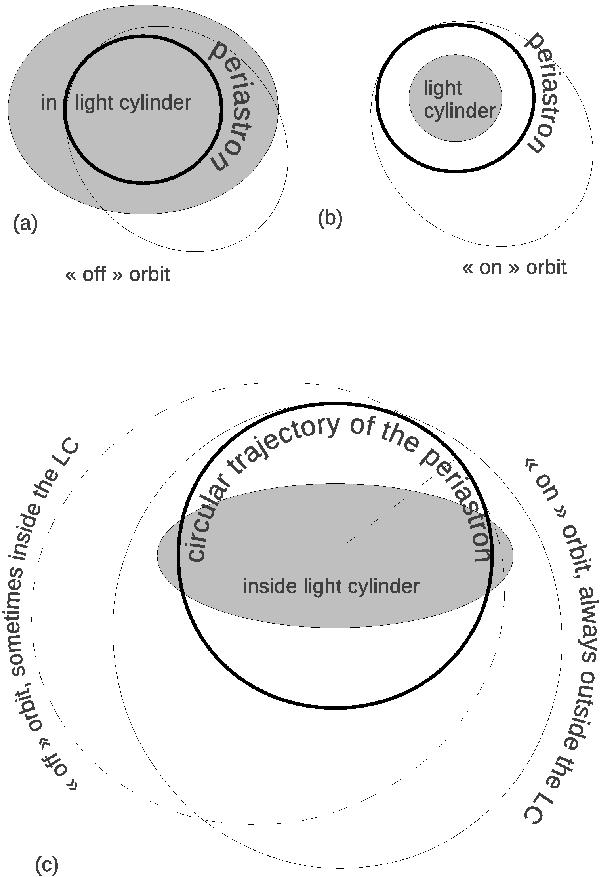Fig. 4

Sketch drawn in the companion’s orbital plane. The grey area is inside the light cylinder (LC). The thick line is the circular trajectory followed (in ~70 days) by the periastron. The thin lines are examples of orbits, approximated here by an ellipse. a) The orbital plane makes a finite angle with the star’s equatorial plane, and the periastron is lower than the light cylinder’s radius. b) The orbital plane is the same as the star’s equatorial plane, and the periastron is higher than the light cylinder’s radius. c) An example of an inclined orbital plane and a periastron higher than the light cylinder’s radius. The geometry displayed here allows for both “active” and “silent” modes. We drew the sketch accordingly to the “standard pulsar hypothesis” (hypothesis 1 in Sect. 2). Under the hypothesis 2 (“dormant pulsar”), the words “on” and “off” must be permuted.
Current usage metrics show cumulative count of Article Views (full-text article views including HTML views, PDF and ePub downloads, according to the available data) and Abstracts Views on Vision4Press platform.
Data correspond to usage on the plateform after 2015. The current usage metrics is available 48-96 hours after online publication and is updated daily on week days.
Initial download of the metrics may take a while.


